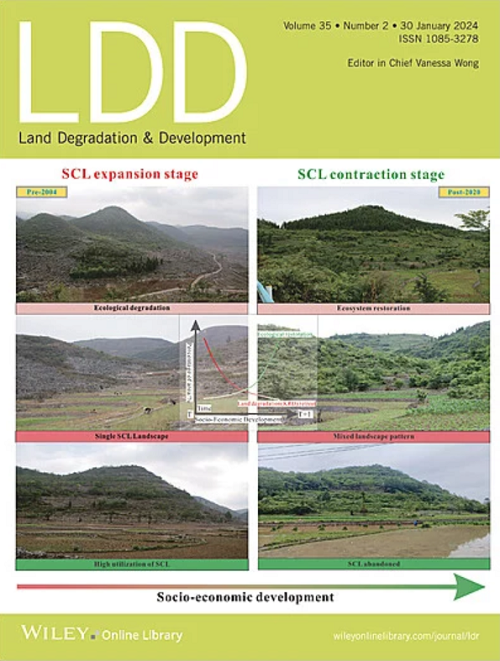提高采矿业的环境可持续性:资源管理和数字集成的循环经济战略
IF 3.6
2区 农林科学
Q2 ENVIRONMENTAL SCIENCES
引用次数: 0
摘要
有效的自然资源管理对于平衡经济增长与环境可持续性至关重要,特别是在资源密集型工业中。这项研究涉及自然资源管理方面的关键问题,特别着重于采矿业。它在循环经济框架内结合数字化和供应链配送,实现可持续发展,缓解土地退化,实现经济效益。为了应对气候变化、资源稀缺和土地退化带来的挑战,循环经济已成为一个关键目标,特别是在采矿等资源密集型行业。主要研究问题的目的是确定有效支持采矿作业向循环办法过渡的标准和战略。为此,本研究采用模糊层次分析法(FAHP)对各标准及子标准进行评价。随后,应用理想解相似排序偏好模糊技术(FTOPSIS)对策略进行排序,对这一决策挑战进行了综合分析。FAHP分析表明,资源效率是最重要的标准,其次是供应链和数字集成。此外,FTOPSIS分析显示,资源回收系统、绿色物流和循环产品设计是在采矿业中促进循环经济方法的关键战略。这些发现为政策制定者和行业领导者提供了重要指导。它们帮助制定专门针对采矿业的可持续战略。通过这些策略,利益相关者可以同时获得环境、经济和社会优势。本文章由计算机程序翻译,如有差异,请以英文原文为准。
Enhancing Environmental Sustainability in the Mining Industry: Circular Economy Strategies for Resource Management and Digital Integration
Effective natural resource management is essential for balancing economic growth with environmental sustainability, especially in resource-intensive industries. This study addresses critical issues in natural resource management, with a particular focus on the mining industry. It incorporates digitalization and supply chain distribution within the framework of the circular economy to achieve sustainability, mitigate land degradation, and realize economic benefits. In response to challenges posed by climate change, resource scarcity, and land degradation, the circular economy has emerged as a key objective, particularly in resource-intensive sectors like mining. The primary research question aims to identify the criteria and strategies that effectively support the transition to a circular approach in mining operations. To investigate this, the study employed the fuzzy analytical hierarchy process (FAHP) method to assess various criteria and sub-criteria. Subsequently, the fuzzy technique for order preference by similarity to ideal solution (FTOPSIS) method was applied to rank the strategies, offering a comprehensive analysis of this decision-making challenge. The FAHP analysis indicates resource efficiency is the most crucial criterion, followed by supply chain and digital integration as top priorities. Additionally, the FTOPSIS analysis shows resource recovery systems, green logistics, and circular product design as the key strategies for fostering a circular economy approach within the mining sector. These findings give important guidance to policymakers and industry leaders. They help in creating sustainable strategies specifically for the mining industry. Through these strategies, stakeholders can achieve both environmental, economic, and social advantages.
求助全文
通过发布文献求助,成功后即可免费获取论文全文。
去求助
来源期刊

Land Degradation & Development
农林科学-环境科学
CiteScore
7.70
自引率
8.50%
发文量
379
审稿时长
5.5 months
期刊介绍:
Land Degradation & Development is an international journal which seeks to promote rational study of the recognition, monitoring, control and rehabilitation of degradation in terrestrial environments. The journal focuses on:
- what land degradation is;
- what causes land degradation;
- the impacts of land degradation
- the scale of land degradation;
- the history, current status or future trends of land degradation;
- avoidance, mitigation and control of land degradation;
- remedial actions to rehabilitate or restore degraded land;
- sustainable land management.
 求助内容:
求助内容: 应助结果提醒方式:
应助结果提醒方式:


